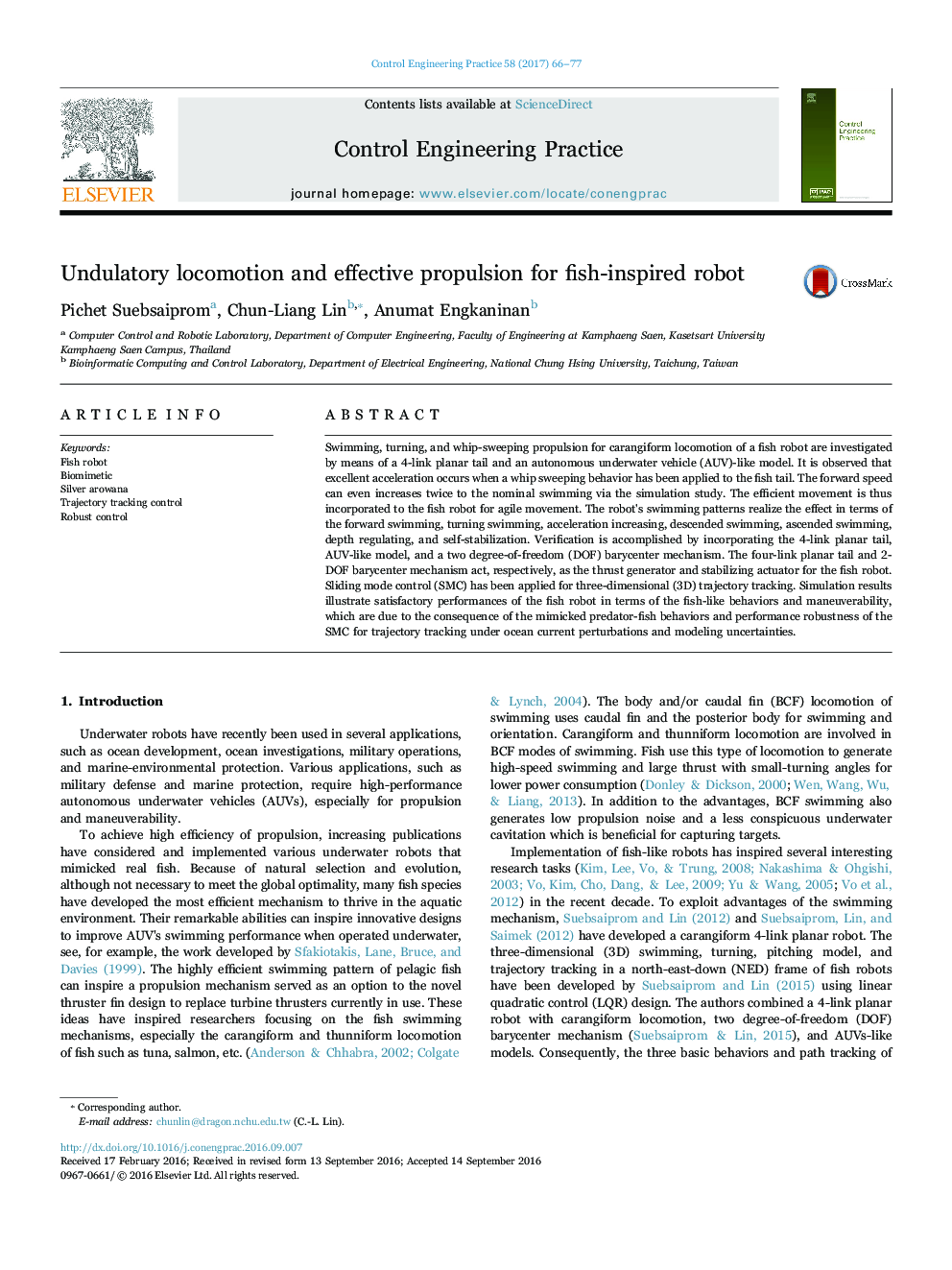| Article ID | Journal | Published Year | Pages | File Type |
|---|---|---|---|---|
| 5000452 | Control Engineering Practice | 2017 | 12 Pages |
Abstract
Swimming, turning, and whip-sweeping propulsion for carangiform locomotion of a fish robot are investigated by means of a 4-link planar tail and an autonomous underwater vehicle (AUV)-like model. It is observed that excellent acceleration occurs when a whip sweeping behavior has been applied to the fish tail. The forward speed can even increases twice to the nominal swimming via the simulation study. The efficient movement is thus incorporated to the fish robot for agile movement. The robot's swimming patterns realize the effect in terms of the forward swimming, turning swimming, acceleration increasing, descended swimming, ascended swimming, depth regulating, and self-stabilization. Verification is accomplished by incorporating the 4-link planar tail, AUV-like model, and a two degree-of-freedom (DOF) barycenter mechanism. The four-link planar tail and 2-DOF barycenter mechanism act, respectively, as the thrust generator and stabilizing actuator for the fish robot. Sliding mode control (SMC) has been applied for three-dimensional (3D) trajectory tracking. Simulation results illustrate satisfactory performances of the fish robot in terms of the fish-like behaviors and maneuverability, which are due to the consequence of the mimicked predator-fish behaviors and performance robustness of the SMC for trajectory tracking under ocean current perturbations and modeling uncertainties.
Related Topics
Physical Sciences and Engineering
Engineering
Aerospace Engineering
Authors
Pichet Suebsaiprom, Chun-Liang Lin, Anumat Engkaninan,
